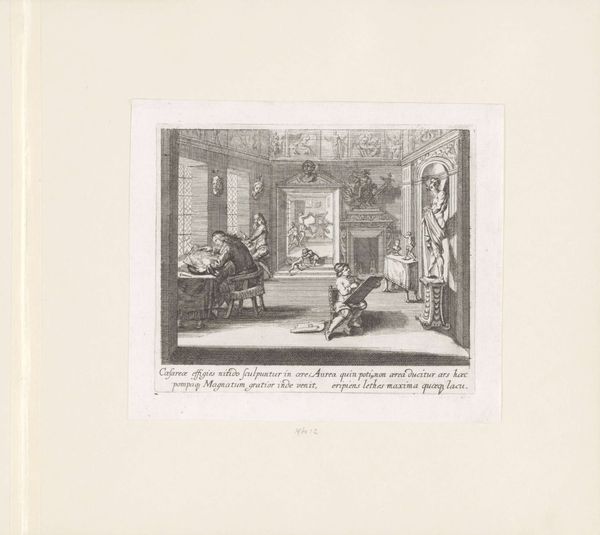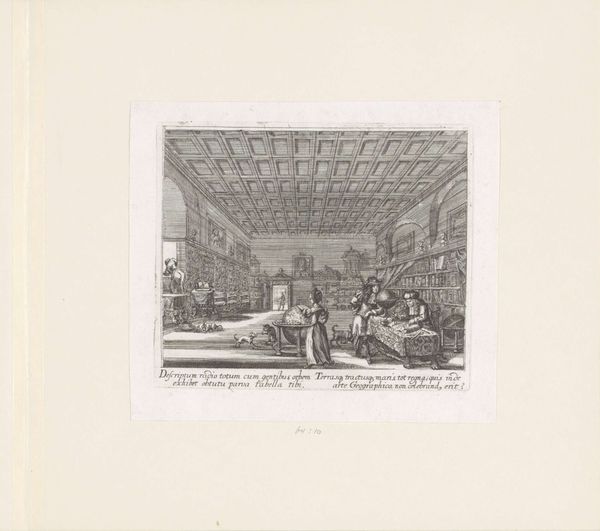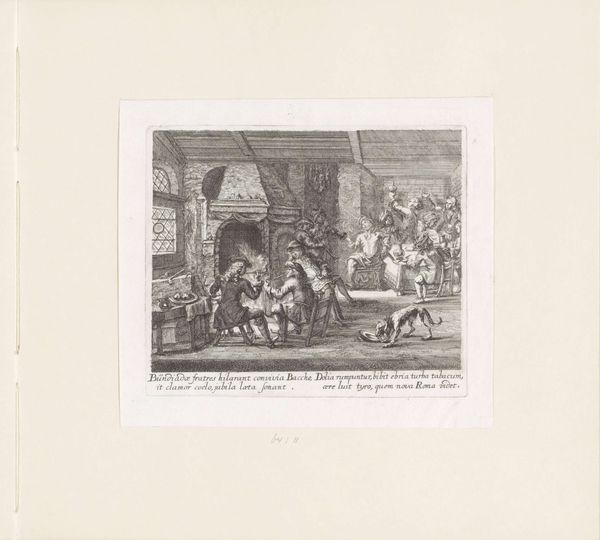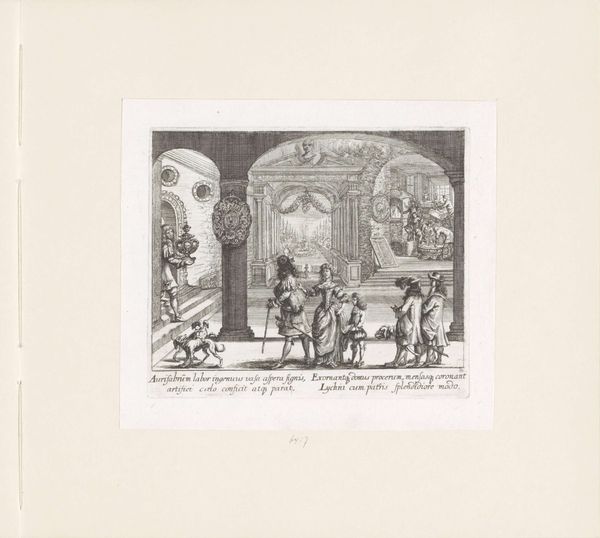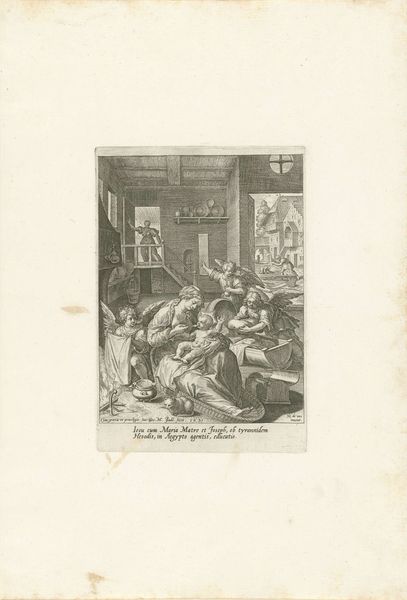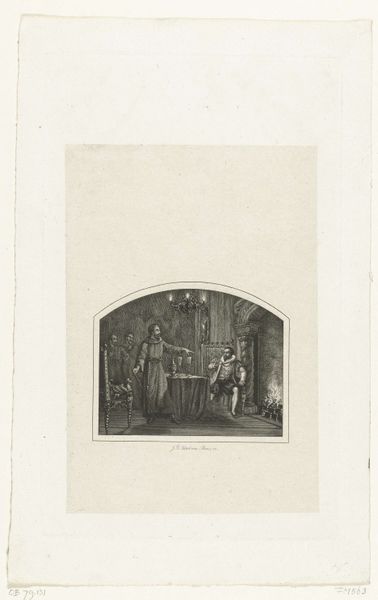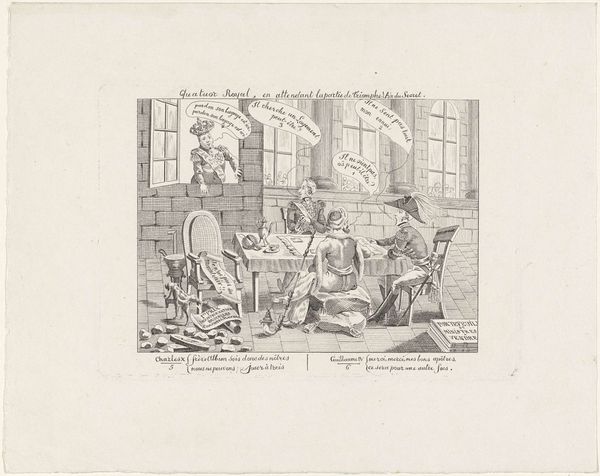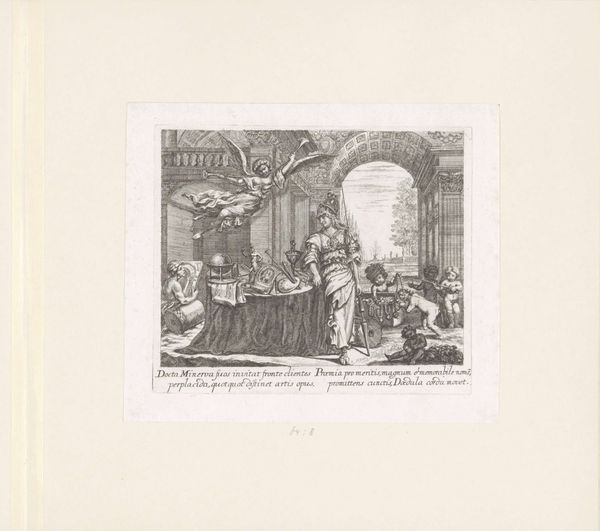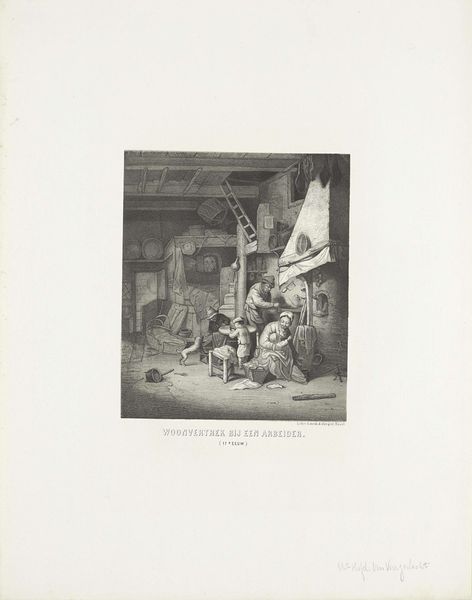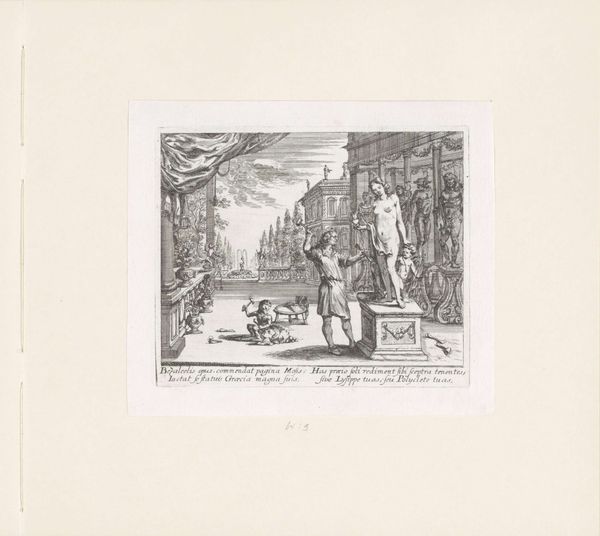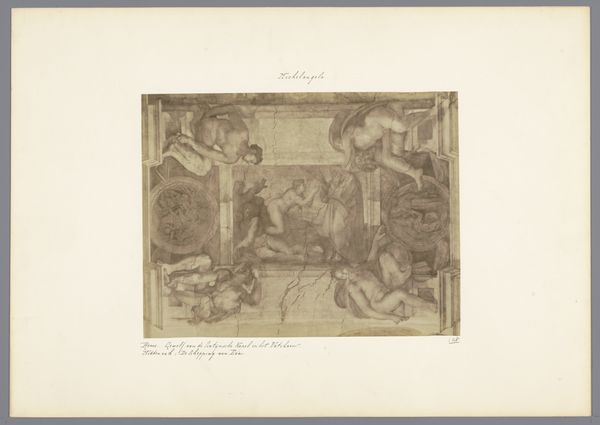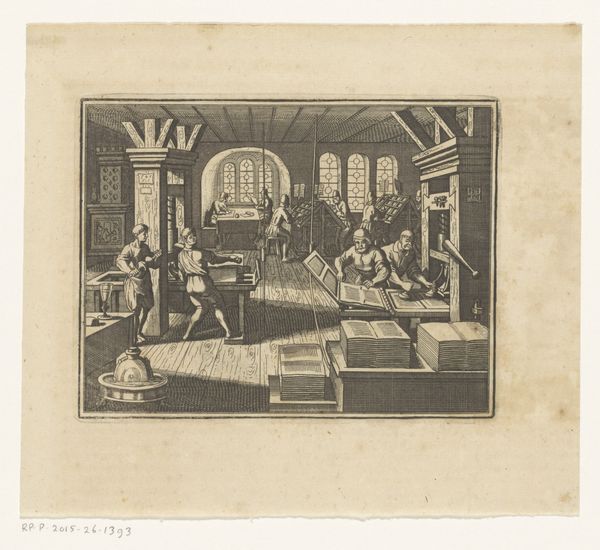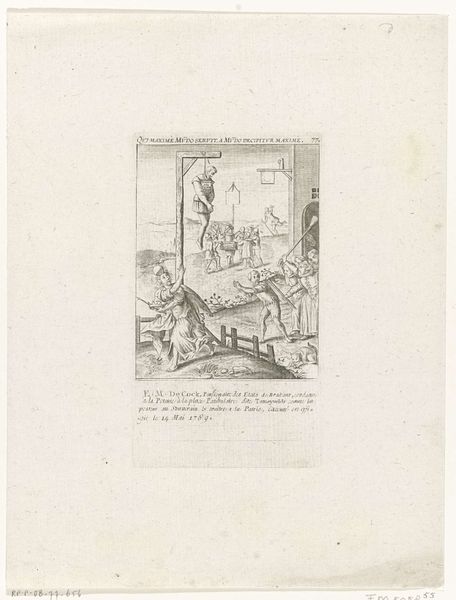
print, engraving
#
baroque
# print
#
old engraving style
#
genre-painting
#
history-painting
#
engraving
Dimensions: height 134 mm, width 160 mm
Copyright: Rijks Museum: Open Domain
Curator: Here we have Mathäus Küsel's "Schilderkunst," an engraving dating back to 1680, now held at the Rijksmuseum. Editor: Immediately striking is the intricacy—it's like a miniature world captured in fine lines, so much detail within the confines of the engraving. I’m especially drawn to the depth achieved. Curator: Küsel offers us a glimpse into an artist's studio, reflecting the era's fascination with both history and genre painting. The scene features an artist diligently at work, while other figures admire the unfolding composition. It also underscores the baroque aesthetic. Editor: There’s a certain hierarchy depicted here, isn’t there? The artist, centered and active, with the more aristocratic patron to his left, seemingly observing and providing... funding, presumably. It reminds us who art often served. Curator: Precisely. Patronage was absolutely critical in that period. Artists often needed the financial backing of wealthy individuals or institutions to realize their creative visions. Editor: And this isn't just about skill, it is about power. Note also the architecture of the space – high ceilings, embellished walls – broadcasting wealth and status. Curator: You’re right, and that level of interior decor would reflect that Baroque period aesthetic standards and taste. It showcases art's entanglement with economic and social hierarchies of its time. The very space becomes a statement. Editor: Also interesting is what seems to be copied in this print, referencing historical subjects. In that regard, do you find echoes of a similar theme repeating themselves over the years. In some regards very little changed since this print. Curator: That's the powerful intersection between "history painting" and "genre painting." We can clearly notice the social role that Art has always embodied and that it continues to embody. Editor: Right, it’s a neat reflection of the complex societal relationships that produced the painting within the engraving and it makes one think about that cycle even today. Curator: Absolutely. Looking closely at "Schilderkunst," we begin to unpack layers of artistic creation and how art mirrored the socio-political landscape. Editor: Definitely! It provides a view into the social mechanics and political power play within 17th-century Dutch art, making it perennially relevant.
Comments
No comments
Be the first to comment and join the conversation on the ultimate creative platform.
